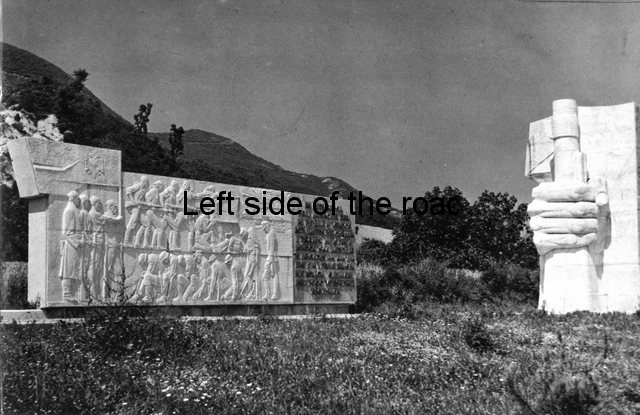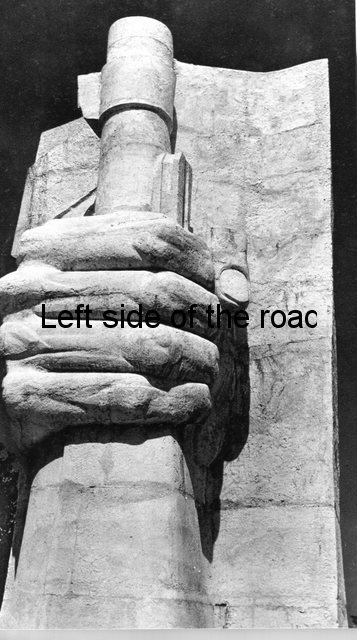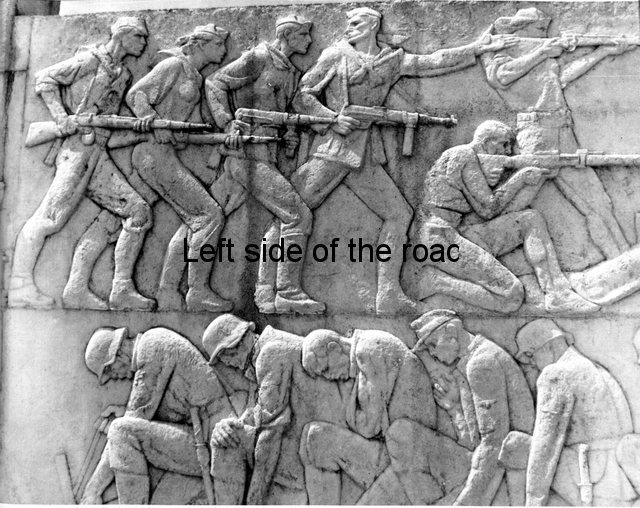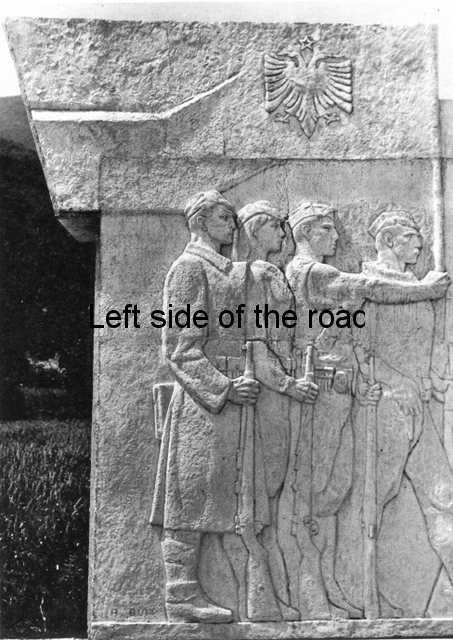
Mushqeta Monument
Ukraine – what you’re not told
Introduction
This article first appeared in New Albania, No 4, 1976. It is reproduced here to give more information about this crucial battle against Hitlerite Fascism in the final days of the National Liberation War – and only a matter of days before the liberation of Tirana and the effective end of hostilities in Albania. Hopefully this will assist in the greater understanding of the analysis of the elements of the lapidar described in Mushqete Monument – Berzhite.
This article is further interesting as it provides a Socialist Albanian view of how they saw this battle against the German invaders.
Contrast this to those reactionaries and counter-revolutionaries who took control of the country in the 1990s. There reaction was to allow the creation of a monument to the German fascist dead and its installation in the hills of Tirana Park. To add salt to the wound this paean to fascism is only a matter of metres away from the original location of the National Martyrs’ Cemetery before it was moved to its present location and the inauguration of the statue of Mother Albania in 1972.
What does this monument stand for? The Mushqeta Monument
This monument has been raised at the village of Mushqeta, some ten kilometres south-east of Tirana. It has been raised in memory of the battle waged in this village on the 14th and 15th of November 1944 against the German forces of occupation.
The forces of the Albanian National Liberation Army were waging the decisive battle for the liberation of the capital. The entire garrison of the Hitlerite troops in Tirana had been surrounded from all sides. To avoid total disaster the German command sent a contingent of 2,000 soldiers, tanks, artillery and other armoured means from Elbasan (a city 50 kilometres south of Tirana) which were to attack the partisan detachments from the rear and, together with the forces of another German column which would come from Durrës (in the west), were to surround and liquidate the partisan forces fighting for the liberation of the capital.
On November 14th the enemy column is attacked by the detachments of the National Liberation Army lying in ambush at Mushqeta. The fighting continued fiercely all through the night. In the morning of the 15th the Nazi column is completely surrounded with the exception of a small part which managed to break the siege during the night with the aid of tanks. Seeing that they had no way out, the Germans launch a desparate counter offensive using their artillery, tanks and all other means of warfare. Bloody attacks and counter attacks continue during the whole day. By 5.99 p.m. that day, the Nazi column had been completely liquidated. The enemy left on the battlefield over 1,500 dead, many wounded and prisoners together with all their military equipment.
On November 17, 1944, Tirana, the capital of Albania, was completely liberated by the Albanian National Liberation Army. The victory at Mushqeta was the forewarning and forerunner of the liberation of the capital.
To give a better idea of what happened during that battle, we are reproducing a description by a military correspondent of the First Division of the National Liberation Army, who passed over the field of battle straight after the fighting had ended. Here is what he writes:
‘From the New Palace on the outskirts of Tirana to the village of Berzhite one can imagine that this great defeat of which so much is being spoken, especially when you see, besides the wrecked vehicles, the quintals of dynamite the enemy had abandoned on the Erzeni and Farka bridges because they had no time to blow them up. Here you can see destroyed vehicles, carts, horses and corpses. You say to yourself that this must have been the greatest defeat of the enemy. After passing this zone, you are faced with a pile of dead horses and overturned wagons, vehicles upturned in ditches, others in good order, wagons loaded with booty the Hitlerites had plundered in Greece and Albania, and armaments you had never seen before. You can count the equipment and corpses as far as Berzishta, but from here on it is impossible to count them even if you walk slowly.
Wherever you look, from right to left, you see real rivulets of blood, decaying flesh, very heavy armaments hurled off the highway as if by some extraordinary physical force, almost impossible to imagine.
You think this slaughter will continue as far as the corner of the road, no matter how great the battle had been fought. It could not possibly continue any further. But on rounding the bend, the heaps become more numerous. It seems as if the vehicles and wagons had wanted to push one another. Overturned material lying all over the place in complete disorder as if there had been a particularly heavy earthquake.
Further away from the road, on the side of the small hills on the banks of the river, 4 high calibre field guns have been abandoned facing each other even though they were used against our army. Further away, there are the number of mobile cooking houses enough for a whole division. Transport trucks complete with trailer, long wagons, vehicles carrying anti-aircraft guns directed towards the sky, small cannons, light and heavy machine-guns, cars, rifles, medical supplies and a pile of other things of every colour and kind. Among them is a baby’s pillow undoubtedly stolen by the army from some family at Elbasan.
Again corpses and dead horses and larger streams of blood. In the distance on the edge of the fields bordering the river bank, one sees horses which have escaped from this slaughter. They say there are also a number of hidden enemies who are giving themselves up to the surrounding villages. Further on, a colonel killed inside a car, the vehicle is completely wrecked, motor cycles abandoned on the road and the same scene as before.
You still walk through trails blocked by material, transport vehicles, dead horses and so on. You walk along the trails of the clearing, and then you are stuck on a sharp bend, below your right, where a small stream flows, the material and bodies are piled up in disorder. The horses lying prostrate on the ground and the bodies give the impression as if they had been knifed rather than killed by bullets. The stream looks like the channel of a slaughterhouse, the body of an enemy has fallen into the water.
Further across, the same scene over and over again. Horses, bodies, innumerable motor vehicles and wagons, war material and stolen booty in one great mess. The road looks as if the garbage of the city has been strewn along it.
Further on, guns, armaments and ammunition. The flag with the swastika lies hidden inside a wagon like some stolen article barely distinguishable. It reflects the present situation of Nazi Germany which tries to hide its criminal objectives now that the onslaught let loose against the peaceful and innocent peoples is rebounding on its own head.
Two kilometres on the other side of Ibe, two wrecked tanks give the impression as if the enemy column was not heading towards Tirana but towards Elbasan.
When you walk through the place you can’t believe that there had been only 2 to 3 thousand enemy troops. On the basis of the war material and the means of transport, it is calculated that there must have been at least a German division. The booty is so big that it gives the impression not of an army but of a savage horde of barbarians. This is a complicated scene, which reflects the character of the Nazi bands, pirates with modern means.
The destruction of these forces saved Tirana from the peril of devastation and mass massacres.
When comparing the numerous and heavy means of the enemy, their huge army on the march, the ruggedness of the terrain and their fortified positions with our armaments and positions, one wonders how it was possible to smash up and liquidate more than 2 to 3 thousand Germans by only 1,200 partisans.’












